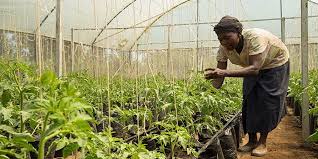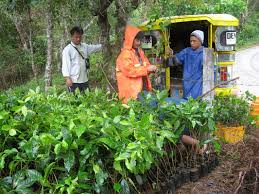Climate-Smart Agriculture (CSA) is an approach designed to address the interlinked challenges of food security and climate change. As global temperatures rise and weather patterns become increasingly unpredictable, agriculture faces significant threats from droughts, floods, and extreme weather events.
These conditions not only endanger crops and livestock but also threaten the livelihoods of millions of farmers and food producers worldwide. CSA provides a framework to enhance agricultural resilience and productivity while reducing greenhouse gas emissions.
At its core, CSA aims to achieve three main objectives: increasing agricultural productivity, adapting to climate change, and mitigating greenhouse gas emissions. This involves adopting practices and technologies that optimize the use of resources, improve soil health, and support sustainable farming.
For instance, techniques like conservation tillage, agroforestry, and integrated pest management help maintain soil fertility, conserve water, and reduce dependency on chemical inputs. Additionally, CSA promotes the use of climate-resilient crop varieties and livestock breeds that can withstand changing environmental conditions.
By integrating climate-smart practices into traditional farming systems, CSA enables farmers to better cope with climate-related challenges. It also empowers them to make informed decisions by utilizing climate information services, such as weather forecasts and early warning systems.
Furthermore, CSA fosters partnerships among governments, research institutions, and the private sector to develop and implement sustainable agricultural solutions.
Climate-Smart Agriculture is not a one-size-fits-all approach but rather a set of adaptable practices tailored to local contexts. Its focus on resilience, sustainability, and resource efficiency makes it a vital tool for ensuring food security in a warming world.
As the global population continues to grow, CSA will play a crucial role in building a sustainable and resilient agricultural system that benefits both people and the planet.
Benefits of Climate-Smart Agriculture
1. Enhanced Resilience: One of the primary benefits of CSA is its ability to build resilience in agricultural systems. By promoting practices like drought-resistant crop varieties and diversified farming techniques, CSA helps farmers adapt to unpredictable climate patterns such as prolonged droughts, floods, and extreme weather events.
2. Improved Productivity: Adopting CSA practices can lead to increased agricultural productivity. Techniques such as precision farming, improved irrigation methods, and integrated pest management optimize resource use and minimize crop losses, thereby ensuring more reliable yields even under changing climatic conditions.
3. Environmental Sustainability: CSA prioritizes environmental sustainability by encouraging practices that conserve soil health, enhance biodiversity, and reduce greenhouse gas emissions.
Methods like agroforestry, conservation tillage, and organic farming not only improve soil fertility and structure but also mitigate agriculture’s contribution to climate change.
Key Strategies for Implementing Climate-Smart Practices

1. Sustainable Land Management
i. Conservation Agriculture: Conservation agriculture promotes minimal soil disturbance, permanent soil cover with crop residues or cover crops, and diversified cropping systems. These practices improve soil structure, water retention, and nutrient cycling, reducing erosion and enhancing long-term productivity.
ii. Agroforestry: Integrating trees with crops and livestock on the same land promotes biodiversity, provides shade and wind protection, improves soil fertility through leaf litter, and offers additional sources of income from timber and fruits.
2. Water Resource Management
i. Efficient Irrigation Systems: Adopting water-efficient irrigation systems such as drip irrigation, micro-sprinklers, and laser leveling minimizes water wastage and ensures precise water application, especially crucial in arid and semi-arid regions facing water scarcity.
ii. Rainwater Harvesting: Capturing and storing rainwater for agricultural use during dry periods reduces dependency on unreliable rainfall patterns and contributes to sustainable water management on farms.
3. Agroecological Practices
i. Integrated Pest Management (IPM): IPM integrates biological, cultural, and mechanical methods to manage pests effectively while minimizing the use of synthetic pesticides. This approach preserves natural predator-prey relationships and reduces environmental contamination.
ii. Crop Diversity: Planting diverse crops helps buffer against climate risks, as different species have varied tolerances to temperature, pests, and diseases. Crop rotations and intercropping also improve soil health and nutrient availability.
4. Integrated Crop-Livestock Systems
i. Rotational Grazing: Rotational grazing systems allow livestock to graze in a controlled manner, promoting soil health by preventing overgrazing and enhancing nutrient cycling through manure deposition.
ii. Cover Cropping: Integrating cover crops like legumes or grasses in rotation with cash crops improves soil fertility, suppresses weeds, and reduces erosion while providing additional forage for livestock.
5. Use of Climate-Resilient Varieties
i. Breeding for Resilience: Developing and deploying crop varieties through breeding programs that are resistant to pests, diseases, and climatic stresses such as heat and drought ensures stable yields and reduces vulnerability to environmental fluctuations.
ii. Genetic Engineering: Genetic engineering techniques can enhance crop resilience by introducing traits like drought tolerance or pest resistance. However, careful consideration of environmental and socio-economic impacts is essential in their deployment.
Efficient Nutrient Management
Efficient nutrient management is crucial in Climate-Smart Agriculture (CSA) to optimize crop productivity while minimizing environmental impact. Key practices include:
1. Soil Testing and Analysis: Conducting regular soil tests to determine nutrient levels and pH, enabling farmers to apply fertilizers judiciously based on crop requirements.
2. Balanced Fertilization: Using organic and mineral fertilizers in balanced ratios to prevent nutrient imbalances, reduce runoff, and enhance soil fertility sustainably.
3. Nutrient Cycling: Implementing practices such as crop rotation, cover cropping, and composting to recycle nutrients within the farm ecosystem, improving soil health and reducing dependency on external inputs.
Read Also: Recommended Number of Ruminant Animals per Housing Unit for Fattening
Agroforestry and Afforestation

Agroforestry and afforestation play crucial roles in CSA by integrating trees into agricultural landscapes to enhance resilience and sustainability:
1. Agroforestry Systems: Integrate trees with crops and livestock, providing multiple benefits such as improved soil fertility, biodiversity conservation, and additional income sources from timber, fruits, and non-timber forest products.
2. Afforestation: Establishing new forests on degraded or marginal lands helps sequester carbon dioxide, mitigate climate change impacts, and enhance ecosystem services such as water regulation and habitat conservation.
Climate-Smart Livestock Management
Livestock management practices in CSA focus on reducing environmental footprint while ensuring animal welfare and productivity:
1. Sustainable Grazing Systems: Implementing rotational grazing and managed intensive grazing to optimize pasture utilization, prevent soil erosion, and improve forage quality.
2. Feed Efficiency: Using feed supplements, improved forage varieties, and balanced diets to enhance livestock nutrition, reduce methane emissions, and improve feed conversion efficiency.
3. Manure Management: Properly managing animal waste through composting, anaerobic digestion, or biochar production to minimize nutrient runoff and greenhouse gas emissions while producing organic fertilizers.
Read Also: 4 Steps to help an Orange Tree Produce Sweet Oranges
Adoption of Technology and Innovation

1. Precision Agriculture: Utilizing GPS, remote sensing, and data analytics to optimize inputs like water, fertilizers, and pesticides, thereby improving resource use efficiency and crop yield predictability.
2. Climate-Resilient Crop Varieties: Developing and adopting genetically improved crop varieties that tolerate drought, pests, and diseases, ensuring stable yields under changing climatic conditions.
3. Farm Management Apps: Using mobile applications for real-time weather updates, market information, and farm management advice, empowering farmers to make informed decisions and enhance productivity.
Policy Support and Community Engagement
Effective policy frameworks and community involvement are essential for promoting CSA adoption and sustainability:
1. Policy Incentives: Providing subsidies, tax incentives, and financial support for CSA practices, research, and infrastructure development to encourage farmers to adopt sustainable practices.
2. Capacity Building: Training programs, workshops, and extension services to educate farmers about CSA techniques, benefits, and best practices, facilitating widespread adoption and knowledge sharing.
3. Stakeholder Engagement: Collaborating with farmers, local communities, NGOs, researchers, and policymakers to co-design and implement CSA initiatives that address local needs and challenges effectively.
Challenges in Implementing Climate-Smart Agriculture
Despite its benefits, implementing CSA faces several challenges that require strategic solutions:
1. Knowledge and Awareness: Many farmers lack awareness and access to information about CSA practices, limiting adoption rates and effectiveness.
2. Financial Constraints: Initial investments in technology, improved seeds, and infrastructure for CSA can be prohibitive for smallholder farmers, necessitating financial support and incentives.
3. Policy Alignment: Ensuring coherence between agricultural policies, environmental regulations, and climate adaptation strategies to create an enabling environment for CSA implementation.
4. Scaling Up: Scaling CSA practices from pilot projects to broader adoption across diverse agricultural landscapes and socio-economic contexts requires tailored approaches and collaborative efforts.
5. Climate Uncertainty: Addressing the unpredictability of climate change impacts and developing adaptive strategies that are resilient to future climatic scenarios.
Do you have any questions, suggestions, or contributions? If so, please feel free to use the comment box below to share your thoughts. We also encourage you to kindly share this information with others who might benefit from it. Since we can’t reach everyone at once, we truly appreciate your help in spreading the word. Thank you so much for your support and for sharing!
Read Also: Gray Leaf Spot (Stemphylium spp) – Symptoms and Damage Control
Frequently Asked Questions
We will update this section soon.

